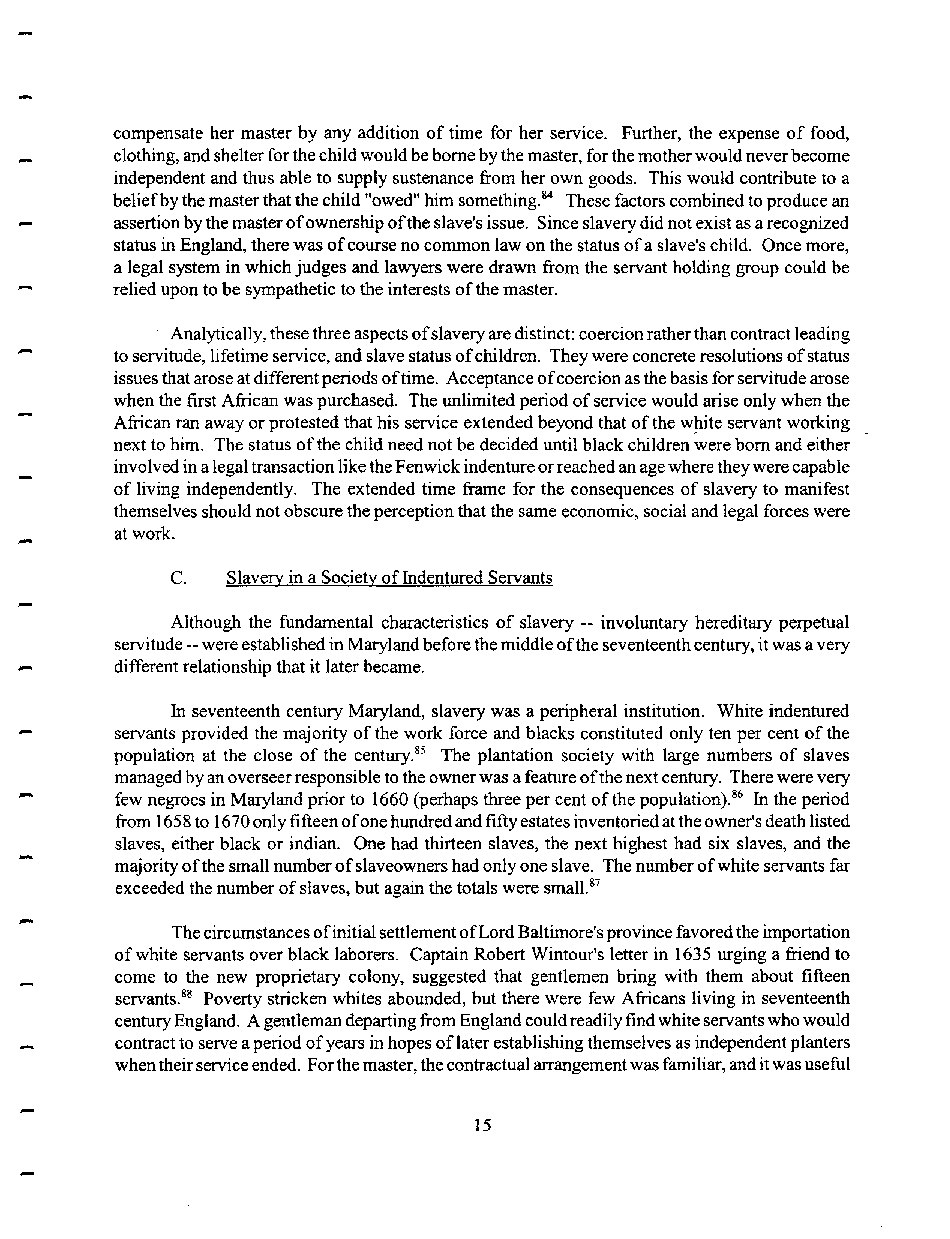|
compensate her master by any addition of time for her service. Further, the expense of food,
clothing, and shelter for the child would be borne by the master, for the mother would never become
independent and thus able to supply sustenance from her own goods. This would contribute to a
belief by the master that the child "owed" him something.84 These factors combined to produce an
assertion by the master of ownership of the slave's issue. Since slavery did not exist as a recognized
status in England, there was of course no common law on the status of a slave's child. Once more,
a legal system in which judges and lawyers were drawn from the servant holding group could be
relied upon to be sympathetic to the interests of the master.
Analytically, these three aspects of slavery are distinct: coercion rather than contract leading
to servitude, lifetime service, and slave status of children. They were concrete resolutions of status
issues that arose at different periods of time. Acceptance of coercion as the basis for servitude arose
when the first African was purchased. The unlimited period of service would arise only when the
African ran away or protested that his service extended beyond that of the white servant working
next to him. The status of the child need not be decided until black children were bom and either
involved in a legal transaction like the Fenwick indenture or reached an age where they were capable
of living independently. The extended time frame for the consequences of slavery to manifest
themselves should not obscure the perception that the same economic, social and legal forces were
at work.
C. Slavery in a Society of Indentured Servants
Although the fundamental characteristics of slavery ~ involuntary hereditary perpetual
servitude — were established in Maryland before the middle of the seventeenth century, it was a very
different relationship that it later became.
In seventeenth century Maryland, slavery was a peripheral institution. White indentured
servants provided the majority of the work force and blacks constituted only ten per cent of the
population at the close of the century.85 The plantation society with large numbers of slaves
managed by an overseer responsible to the owner was a feature of the next century. There were very
few negroes in Maryland prior to 1660 (perhaps three per cent of the population).86 In the period
from 1658 to 1670 only fifteen of one hundred and fifty estates inventoried at the owner's death listed
slaves, either black or indian. One had thirteen slaves, the next highest had six slaves, and the
majority of the small number of slaveowners had only one slave. The number of white servants far
exceeded the number of slaves, but again the totals were small.87
The circumstances of initial settlement of Lord Baltimore's province favored the importation
of white servants over black laborers. Captain Robert Wintour's letter in 1635 urging a friend to
come to the new proprietary colony, suggested that gentlemen bring with them about fifteen
servants.88 Poverty stricken whites abounded, but there were few Africans living in seventeenth
century England. A gentleman departing from England could readily find white servants who would
contract to serve a period of years in hopes of later establishing themselves as independent planters
when their service ended. For the master, the contractual arrangement was familiar, and it was useful
15
�
|

